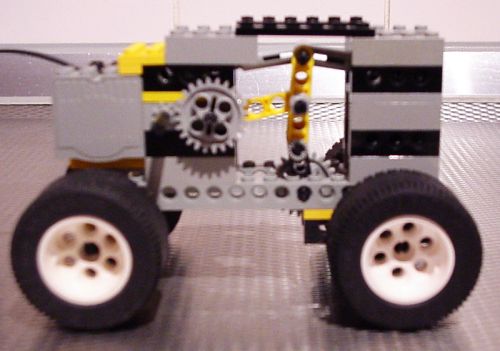
March 2004. In this project I have tried to reproduce the Torque Converter, invented by George Constantinescu in 1923, as a way to achieve continuous variable transmission ( CVT ) for LEGO cars. A beautiful paper about this man and his inventions has been published by Ian Constantinesco The basis idea is to get a transmission that adapts automatically to the load of the motor by changing the transmission to an optimal value between zero and full speed. In the orginal concept a pendulum with a weight is used.The motor keeps the pendulum swinging. The pendulum drives a ratching mechanism that transmits torque to the wheels if the pendulum moves in the right direction.
The car in the picture shows a demonstration of a LEGO Torque Converter with springs instead of a weight at the end of the pendulum. (In the first design of Constantinescu the pendulum was upside down , weight on top) The most difficult part appeared to be the realisation of a ratcheting mechanism.

The speed of the motor at the left side is geared down and pushes and pulls the middle point of the yellow shaft of the pendulum. The top of this shaft is stabilized on a fixed position by the two springs. The bottom of this shaft is freely rotating connected to a black shaft that is fixed to a 24-tooth gear. The following pictures were taken during the decomposition of this model.
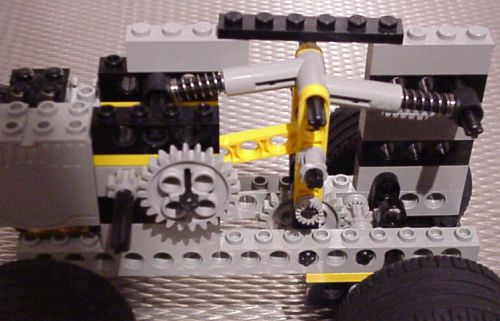
This picture shows more details of the pendulum and the ratchet.
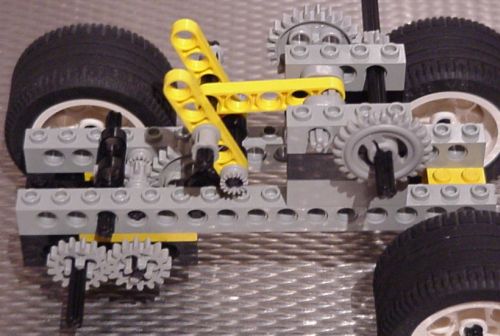
The ratchet is a freely swinging combination of two 10-tooth gears with two functions depending on the rotation direction: transmission to the wheels or braking the wheels. This car drives always in the same direction, independant of the rotation direction of the motor. The car brakes automatically when it is pulled back Blocking of the car does not influence the motor. However, when the car is blocked by hand, the amount of extra torque built up can hardly be felt.
Suggestions for better and more impressive LEGO-demonstrations of the principles of a Torque Converter are welcome!
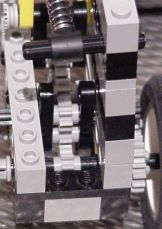
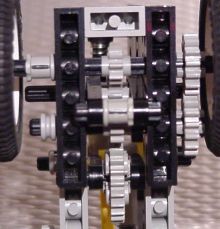
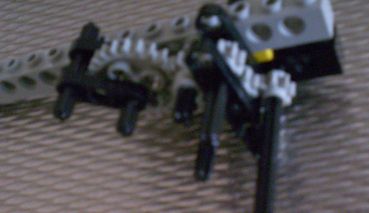
October 2004. I have got some email discussion with "Pete Peterson" about improvements and the explanation of how it works. He send me some pictures of his improvement. In stead of one ratchet , two ratcheds are used. Because his ratchets work in only one direction, the springs also work in one direction. This simplifies the construction and the car will also drive more smoothly. Thanks, Pete! As soon as I have built this version, I will give some comments.
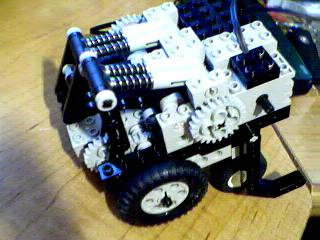
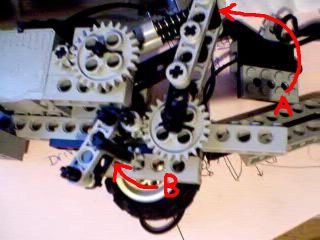
November 2004. Because I was still not satisfied with the explanations I decided to try something else. The idea is to change the length of the lever of the ratchet in a "Flying Dutchman" . The Flying Duchman was a popular toy car for children in the middle of the 20th century. The pushing arm can slide up and down along he lever. If the car can move freely. The swing angle is maximal when the arm is pushing the leer on a low position. The torque is also minimal. If the car is pushing some weight , the arm will push the lever at a higher position and the torque becomes maximal. The swing angle will become minimal. Note that this works properly for just one rotation directory of the motor.
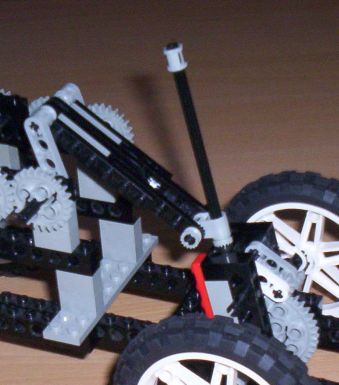
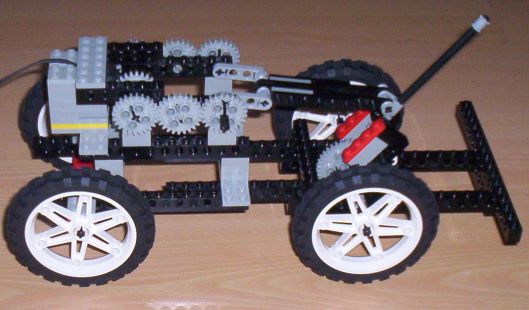
An MPG-movie might help to understand this thing. I estimate that the effective gear ratio varies with a factor between 1 and 6 for this creation.